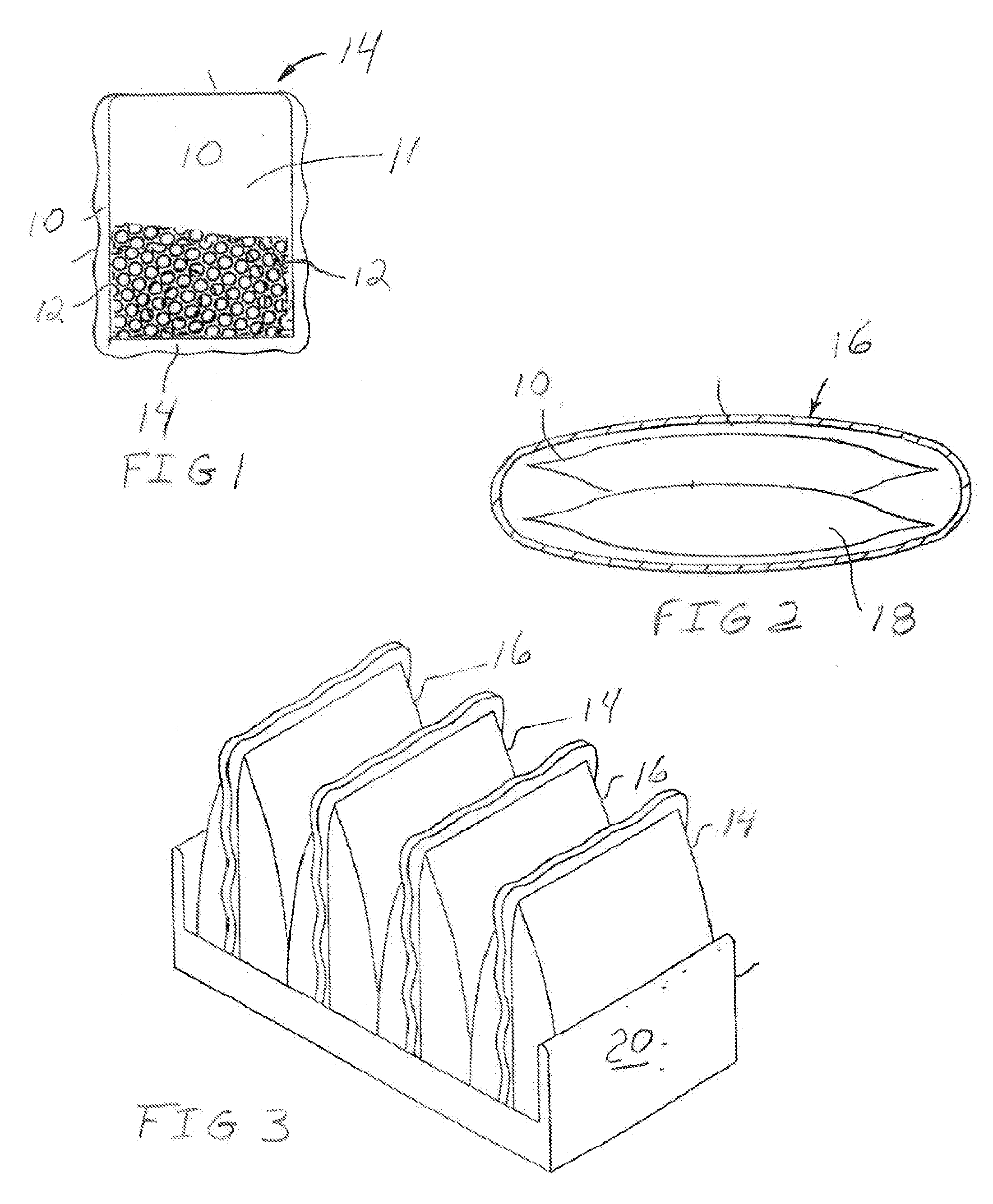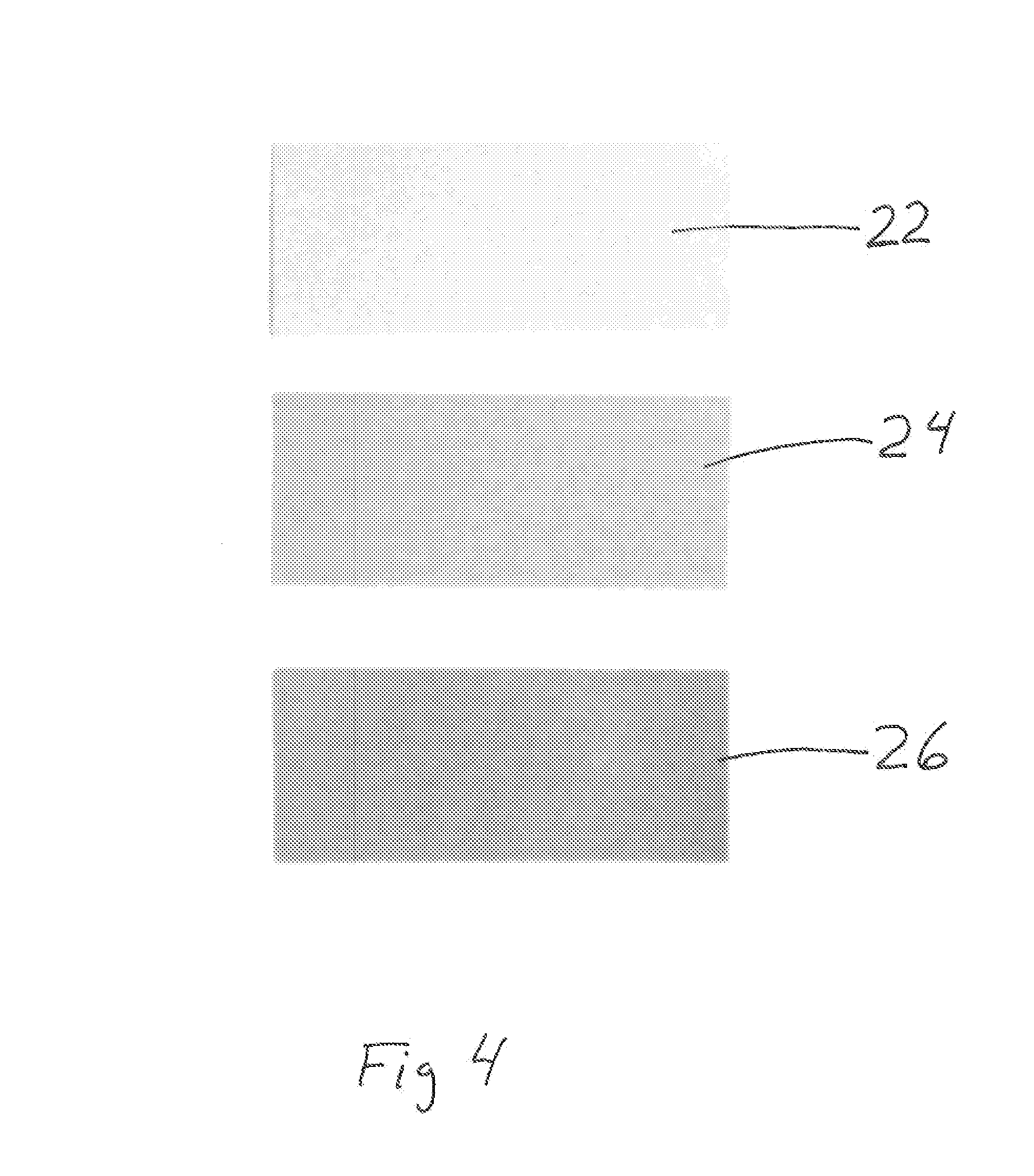Encapsulated colorants for waterborne coating compositions system and kit and method
a technology of colorants and compositions, applied in the field of encapsulated colorants, can solve the problems of difficult cleaning or removal of spilled dry tinters, complicated and expensive pieces of the retail or point of sale establishment, and consumers who do not have the wide variety of colors with the ready mix formula
- Summary
- Abstract
- Description
- Claims
- Application Information
AI Technical Summary
Benefits of technology
Problems solved by technology
Method used
Image
Examples
example 1
Color Control
[0120] A 20, 40, and 60 ml pouch of tinter was added to paint in sequence and stirred in to achieve a specific color. After each pouch was added it was then painted on a card, and judged to be the color desired, or whether you wanted to go darker to the next shade on the card. If so, add the 40 ml to that and achieve the mid shade color and repeat brush out on a card. Repeat the process with the 60 ml pouch to achieve the darkest shade. When developed, the colors were tinted using the stir in method, drawn down on leneta cards dried and measured against a known color standard both spectrophotometrically and visually.
[0121] Pouch Filling Process:
[0122] After determining the colors, the tinter was weighed into paper cups. PVA films were then cut to size, again based on tinter volume, and sealed on three sides using a “Clamco Model 250” thermal sealer Mfg. by Clamco: 12900 Plaza Dr. Cleveland, Oh. The tinter was then poured through a funnel attached to a ring stand into ...
example 2
Color Works
[0125] Selecting a known color from an existing palette, the color is formulated using the method of blending pigments together. Based on the prescribed dose, the colors are then pouched inside the polymeric film. The pouches are then dropped into a gallon of paint and stirred in to achieve the prescribed color.
[0126] Pouch Composition:
PVA Film - 6 ml or Dependant on thetinter dose as described abovePigment Green 7 -2.5% Pigment Yellow 74 -2%Carbon Black -1%Dispersant - (Cocomonoethanolamide surfactant / 10% Phosphated ethoxylated fatty alcohol / Phospholipid surfactant)Clay extender -84.5% Total100%
PUM
| Property | Measurement | Unit |
|---|---|---|
| Temperature | aaaaa | aaaaa |
| Temperature | aaaaa | aaaaa |
| Temperature | aaaaa | aaaaa |
Abstract
Description
Claims
Application Information
 Login to View More
Login to View More - R&D
- Intellectual Property
- Life Sciences
- Materials
- Tech Scout
- Unparalleled Data Quality
- Higher Quality Content
- 60% Fewer Hallucinations
Browse by: Latest US Patents, China's latest patents, Technical Efficacy Thesaurus, Application Domain, Technology Topic, Popular Technical Reports.
© 2025 PatSnap. All rights reserved.Legal|Privacy policy|Modern Slavery Act Transparency Statement|Sitemap|About US| Contact US: help@patsnap.com



